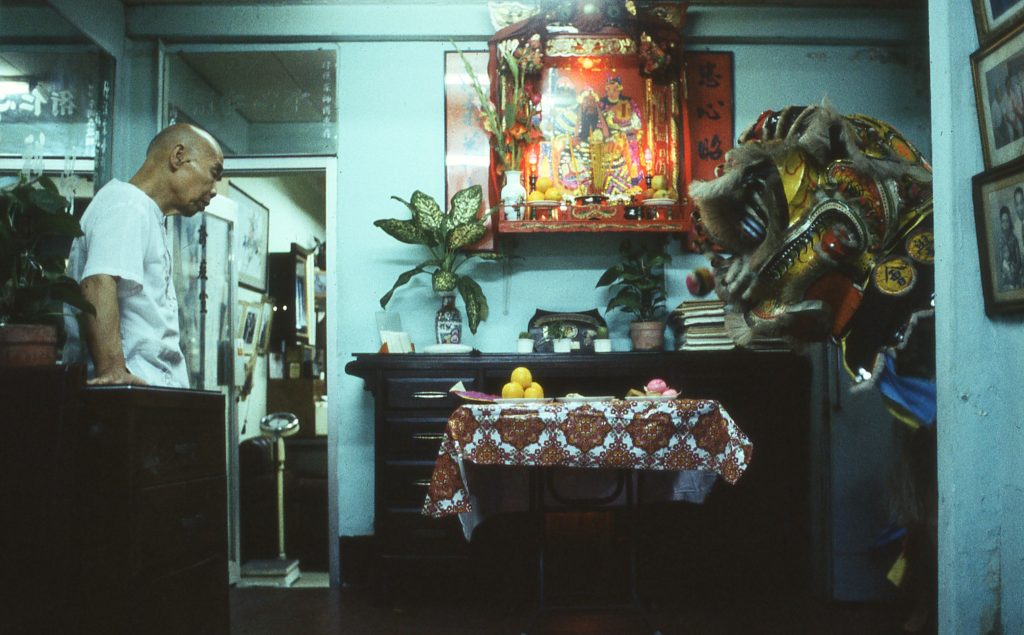
After the passing of the master, the Hung style of Chan Hon Chung has been undergoing an heavy contamination and modification by external influences, sometimes openly conflicting with an uncontaminated handing down of its pure essence and tradition.
In the last 20 years most of the Hung style has undergone a worldwide transformation similar to the one that brought from the Okinawan martial art to the Shotokan karate in the early 20th Century. But while the modern karate has been coded with consciousness and a deep knowledge of its roots, the Hung style has been (and still is) modded by people who for a large majority never saw the real thing in person, having learned it from mixed and/or spurious sources. Due to a somehow conflictive and undefined succession after sifu’s death, this transformation is particularly significant in master Chan’s branched lineage.
Therefore, an art whose fundamental value is the essentiality, gets twisted and denaturalised by an arbitrary schematisation and proliferation of unnatural superstructures. The students are forced to perform ingrained unrealistic techniques obviously meaningless in a real life situation, therefore – as an evident consequence – their only option when sparring is poorly aping the Western boxers.
Learning time is another negative consequence. Back in the days, the sequences of the forms were taught in the shortest possible time (i.e.: in the Hon Chung Gymnasium the Mui Fa Kuen sequence was taught in a week or less), allowing the student to train them soon in their integrity to properly understand, internalise and fine tune the art. The proliferation of the above mentioned stereotyped add-ons, boosted by the desire to bind the students to the teacher and keep collecting their subscription fees as long as possible, justifies a non-kosher, unnatural and technically negative increase in the learning time.
Back in the days the real Hung style of Chan Hon Chung was not about schemes and overdetailing, it was about principles and essentiality. The movements of the forms were taught and trained as pure concepts, clear and uncontaminated, thus delegating the possible interpretations and applications to specific training sessions.
I try to clarify these principles, that apply to every single bit of the Hung style. Respecting them is the primary key to correctly master the real Hung Kuen kung fu of master Chan Hon Chung.
- When training the forms, follow the central line that drives each section. The central line is the main reference for techniques and stances.
- Each section of a form is performed in a precise sequence of actions, starting from the basic condition of “active attention” (the bridge is 留 – lau4):
- hearing
- watching
- moving the intention
- addressing the center of gravity
- stepping
- completing the technique
- back to the active attention condition ready for the next section
- repeat to the end of the form.
- There is never a static condition in the form, the various sections are interspersed by a condition of “active attention” or “留 – lau4” bridge.
- The techniques that compose the forms are purely conceptual, they do not have a specific application per se, but are open to a wide range of interpretations. This statement includes the 12 bridges. I underline that the bridges are not specific movements, but embedded concepts that define the techniques. For this reason one does not train the bridges (a nonsense), one trains the forms. The more he acquires skill and understanding of the art, the more he gets a clear consciousness of the embedded bridges.
- The possible applications of each technique are countless, thus they should not influence the execution of the form. As said, they should be investigated, defined, studied and applied apart.
This brief contribution of debunking is based on my long experience as a Hon Chung Gymnasium student. I hope it can be useful for the serious practitioner determined to learn and to preserve the pure Hung style of Chan Hon Chung from a vulgarisation that can distort, empty and spoil it.